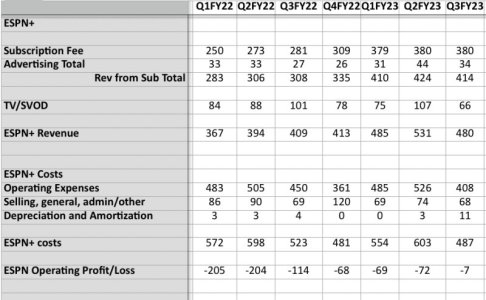https://www.ft.com/content/3312bd87...traffic/partner/feed_headline/us_yahoo/auddev
Hollywood turns inward
Disney’s move to consider selling all or part of Indian operations points to a broader trend among the studios
by
Anna Nicolaou
10/19/2023
Is Disney preparing to say goodbye to India? The US entertainment giant’s chief Bob Iger is considering a significant change of strategy by selling all or part of its India business.
Disney first entered India through a joint venture in the 1990s, when it was riding high from hits like Aladdin and Beauty and the Beast. More recently, India became a crucial part of Iger’s big bet on streaming after he acquired Rupert Murdoch’s Star television business in 2019.
But Disney has recently reached out to Blackstone and other investors to gauge their interest in buying a stake in its Indian arm, according to reports confirmed by the Financial Times. Disney’s potential retreat from the world’s most populous country has been somewhat lost in the long list of things Iger needs to figure out — such as finding his successor, an upcoming bill to buy out a minority stake in streaming service Hulu estimated to be at least $9bn, and the latest attack from billionaire activist investor Nelson Peltz.
But it speaks to a broader global retrenchment by Hollywood. Paramount, owner of the eponymous movie studio, might scrap plans to launch its streaming service in India, according to Bloomberg. Warner Bros Discovery has hinted at similar caution about launching its Max streaming service in countries such as India.
WBD executive JB Perrette recently told a conference in Bali that the company would partner with local distributors in markets where subscriber revenue is “just too low” or cluttered with “a ton of other players, who are . . . losing a ton of money”. This is a reversal from the prevailing thinking among US media groups just a few years ago, when they were all trying to replicate the Netflix playbook. The world outside the US was always a key part of Netflix’s strategy.
As the tech company stomped into Hollywood, rattling the companies that had long run the entertainment business, Netflix executives spoke often of the importance of countries like Brazil or South Korea, where it was investing heavily in local-language fare.
The strategy was to go big: spend a lot of money on making TV shows, and then beam them into televisions in hundreds of countries throughout the world. This helped justify the money they were spending. If Netflix paid $20mn to make a show, the expense was at least divided up among more subscribers.
The incumbent US media groups initially tried to follow suit. But a series of challenges — such as rising interest rates, inflation, and a more impatient stock market — have led them to scale back these ambitions.
As it turns out, producing television in different countries is time-consuming, expensive, and can be hard to get right. Netflix had a big advantage. It took on this task during an era when Wall Street was sympathetic to — even enthusiastic about — its heavy spending. In a sense, Squid Game and Lupin are creatures of the era of rock-bottom interest rates.
The incumbents have not been afforded the same leniency. The current iteration of Hollywood is about delivering profit. It is not surprising then, that Disney is exploring options for India, where its streaming subscribers on average pay only 59 cents a month.
Disney has operated in India for decades but was flung deeper into the country through its blockbuster acquisition of Fox, which included Rupert Murdoch’s Star India — the TV business he and his sons had spent decades building in the fast-growing media market.
This was a boon to Iger’s initial streaming push. Star India contributed a multitude of early subscribers, inflating Disney’s streaming numbers at a time when investors were obsessed with subscriber additions. But a few years later, with the market fixated on profit, these low-paying India subscribers appear less valuable. To make matters worse, Disney last year lost the rights to stream Indian Premier League cricket matches, leading millions of people to cancel their subscriptions.
With Peltz pushing for “multiple” board seats at Disney, Iger is under pressure to cut costs further. Against this backdrop, losing money in India for another five years is not appealing. Netflix chief executive Ted Sarandos seems to have noticed that his competition is backing away.
“When we first started doing this, I thought it was kind of unusual that about 80 per cent of television viewing around the world was US content and we’re like 5 per cent of the population,” Sarandos said at a conference last week. But he added streaming is a “hard” business and “you have to do it at scale”. “It’s really hard for the legacy businesses to navigate that,” he said.

